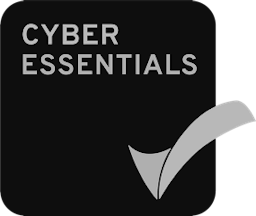May 5, 2023
Zero-Shot Learning: An Introduction and Its Applications in Business
Machine learning models have demonstrated remarkable success in various tasks, such as image recognition, natural language processing, and recommendation systems. However, most models require vast amounts of labelled data for training, which can be time-consuming and expensive to obtain. Zero-shot learning (ZSL) offers a solution to this challenge by enabling models to recognise and classify new instances without any prior exposure to those instances. In this blog post, we will discuss the principles behind zero-shot learning and explore some real-world business applications that can benefit from this innovative approach.
What is Zero-Shot Learning?
Zero-shot learning is a machine learning paradigm that allows a model to make predictions for previously unseen classes without any labelled examples. This is achieved by leveraging prior knowledge about related classes, and using it to create a semantic relationship between seen and unseen classes. Typically, this prior knowledge is encoded as attribute vectors or semantic embeddings, which serve as a bridge between the known and unknown classes.
There are two main approaches to zero-shot learning:
- Attribute-based zero-shot learning: This approach utilises class attributes to establish relationships between seen and unseen classes. For example, in an image recognition task, attributes such as colour, shape, or texture can be used to describe objects. By learning to recognise these attributes, a model can generalise its understanding to new, unseen classes based on their attribute descriptions.
- Semantic embedding-based zero-shot learning: This method relies on semantic embeddings, such as word embeddings, to create a relationship between seen and unseen classes. Semantic embeddings capture the meaning of words in a continuous vector space, enabling the model to leverage semantic relationships between class labels. When faced with an unseen class, the model can utilise the semantic relationships to infer the correct classification.
Zero-Shot Learning in Business Applications
Let's examine some potential business applications of zero-shot learning:
- Product Categorisation: In e-commerce platforms, products must be accurately categorised to facilitate user navigation and search. However, with thousands of products and ever-evolving categories, manual classification can be time-consuming and prone to errors. Zero-shot learning can help automate this process by leveraging existing product information (such as attributes, descriptions, and images) to categorise new products into existing or newly created categories without requiring any labelled data for these new products.
- Customer Support: Businesses often rely on automated chatbots to handle customer queries and reduce the workload of support staff. However, training chatbots to handle every possible query can be challenging due to the vast and dynamic nature of customer inquiries. Zero-shot learning can enable chatbots to understand and respond to previously unseen queries by leveraging semantic relationships between known and unknown questions. This can lead to improved customer support and a more efficient support system.
- Fraud Detection: Financial institutions need to constantly adapt their fraud detection models to identify new types of fraudulent activities. Zero-shot learning can help in detecting previously unseen fraud patterns by establishing relationships between known fraudulent activities and the new ones based on shared attributes or semantic similarities. This can enhance the robustness of fraud detection systems and protect businesses from emerging threats.
Zero-shot learning offers an innovative solution to the limitations of traditional machine learning models that rely heavily on labelled data. By enabling models to make predictions for previously unseen instances, zero-shot learning has the potential to revolutionise various business applications, such as product categorisation, customer support, and fraud detection. By understanding and effectively leveraging zero-shot learning, businesses can streamline processes, improve efficiency, and stay ahead of the competition in a constantly evolving landscape.
Interested in how AI can benefit your company?
Our proof of concept service is not just about demonstrating what's possible, it's about establishing what's practical, profitable and tailored to your business needs.


































